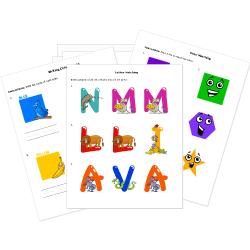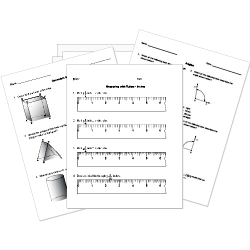Newton's First Law of Motion
Newton's First Law of Motion
This lesson aligns with NGSS PS2.A
Introduction
Newton's laws of motion form the foundation of classical mechanics, providing fundamental principles that govern the motion of objects. Sir Isaac Newton, a brilliant physicist and mathematician, introduced these laws in his groundbreaking work, "Philosophiæ Naturalis Principia Mathematica," published in 1687. Newton's first law of motion, often referred to as the law of inertia, is a cornerstone concept that lays the behavior of objects at rest and in motion. In this article, we will delve into Newton's first law, explore real-world examples that illustrate its application, and tackle problems to solidify our understanding.
Newton's First Law of Motion
Newton's first law states that an object at rest will remain at rest, and an object in motion will continue to move with a constant velocity in a straight line unless acted upon by a net external force. In simpler terms, this law highlights the concept of inertia – the tendency of objects to resist changes in their state of motion. If no external force is applied, an object will maintain its current state, whether it is stationary or moving at a constant speed in a straight line.
Conditions for First Law of Motion
The first law of motion is depend upon two conditions.
Objects at rest:
In this scenario, when an object is at rest, both its velocity (v = 0) and acceleration (a = 0) are zero. Consequently, the object persists in a state of rest.
Objects in motion:
In the case of an object in motion, the velocity is not zero (v ≠ 0), while the acceleration (a = 0) is equal to zero. As a result, the object will persist in motion with a constant velocity and in the same direction.
Understanding External Force
The concept of an external force involves the change in the mechanical energy within an object, which can manifest as changes in kinetic energy or potential energy. These forces result from external agents acting upon the object. Common instances of external forces are friction, normal force, and air resistance.
Examples of Newton's First Law
Stationary Book on a Table:
Imagine a book lying on a table. The book remains at rest unless an external force, such as a push or a pull, is applied. Once the force is exerted, the book will start moving in the direction of the force.

Now, let's analyze the forces acting on the book. The only forces acting on the book are the gravitational force and the normal reaction exerted by the surface. There is an absence of any force acting horizontally. Given that the forces in the vertical direction are of equal magnitude, they nullify each other, resulting in no net external force acting on the book. As the book remains stationary, we can affirm that it confirms Newton’s first law of motion.
If a continuous force F is exerted on the block in a horizontal direction, it will initiate motion with a consistent acceleration in the same direction as the applied force.
Note: Newton’s laws of motion are valid only in inertial frames of reference.
Soccer Ball Being Kicked:
When a soccer ball is kicked on a frictionless field, it would continue moving indefinitely in a straight line at a constant speed. In reality, factors like air resistance and friction will gradually bring the ball to a stop.

Newton's First Law in Problem Solving
Problem 1:
A car is moving at a constant speed of 20 m/s on a straight road. If no external force is applied, how far will the car travel in 10 seconds?
Solution:
Newton's first law also applies to objects in motion, stating that they will continue moving at a constant velocity unless acted upon by an external force. In this case, since no external force is applied, the car's velocity remains constant.
The distance travelled (d) can be calculated using the equation:
d=v⋅t
Where,
- d is the distance travelled,
- v is the velocity of the car (constant at 20 m/s),
- t is the time the car is in motion (given as 10 seconds).
d=(20m/s)⋅(10s)=200m
Therefore, the car will travel 200 meters in 10 seconds.
Summary
- Newton's first law states that an object at rest will remain at rest, and an object in motion will continue to move with a constant velocity in a straight line unless acted upon by a net external force.
- When an object is at rest, both its velocity (v = 0) and acceleration (a = 0) are zero. Consequently, the object persists in a state of rest.
- An external force involves the change in the mechanical energy within an object, either in kinetic energy or potential energy.
Related Worksheets:













